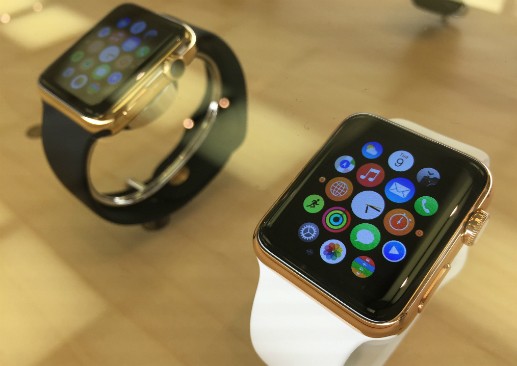Last week’s news that Apple will be launching a new iPhone 6 and an iPhone watch — as well as the less-festive flash that poor Amazon has had to cut the price of its sluggish selling Fire mobile phone to 99 cents (from about $200) — conjured up visions of mountains of older models tossed into the waste stream.
According to eCycle.com, the wireless buyback site, about 130 million phones are discarded each year in the United States alone, with only 17 percent or less recycled. (Some estimates are higher; Google ‘discarded cell phones’ for some staggering photographs.) And that’s just phones; according to this somewhat dated EPA fact sheet on “end-of-life electronics,” the mobile phones represent merely a tiny fraction of the gadgets that are dumped each year, most not recycled despite containing many toxic ingredients (and valuable ones like the gold and silver used in electronics) that can leach into soil and water.
Between the tech industry news and the upcoming holiday season, during which all sorts of electronic gadgets become hot-selling gifts, you might want to do a consumer piece or two about electronics recycling programs offered by communities and by retailers. Or you could contact manufacturers and researchers about how the phones and manufacturing process itself is slowly being made greener, as referenced in this Environmental Leader article.
E-recycling: Gadgets in, gadgets out
The Electronics TakeBack Coalition offers facts and figures, as well as other resources related to electronics recycling, as well as an interactive map of state-by-state legislation. (Compare your state to neighbors.)
And the electronics waste recycling industry is interesting too, if you can find any local players. (Much of it is shipped overseas to third-world countries for the unenviable task of materials reclamation;here’s a piece by The Economist on the outsourcing of what it calls ‘dirty work.’) The research firm IBISWorld is just out with two new reports, one on the cell phone recycling industry and one on electronic goods recycling, both of which predict expansion for reasons ranging from rising commodity prices to increased regulation. (You may request the full reports from IBISWorld’s very responsive media relations department.)
Here’s a press release for the ecoATM, which its operators say has gobbled up three million devices — one million year-to-date in 2014. The self-service kiosks allow consumers to sell their old devices for a few dollars or more, and the press release says the machines validate sellers’ identity to prevent the sale of stolen devices. I had not heard of this concept; if your readers haven’t either they might like to learn more about what happens to their devices once they’ve been dropped off. Here’s a ZIP code searchable database to find an ecoATM in your market.
Another offbeat idea related to the smartphone announcement is the burgeoning cell phone tower sector; I swear half a dozen more have popped up in my general area in the past few months. AntennaSearch.com says there are 551,362 towers in the United States as of late August (wow!) and more than 1.7 million actual antennae. The site offers a searchable database that will give location and even ownership info of towers within a radius of your search terms. I am not vouching for the site; it might be safer to go through its media relations office with inquiries till you can ascertain that the downloads it offers are legit. But a story and graphic on the proliferation of towers in your area, who owns them, whose making money by leasing the land to the owners, and what towers are planned, would likely be a hit with readers.











